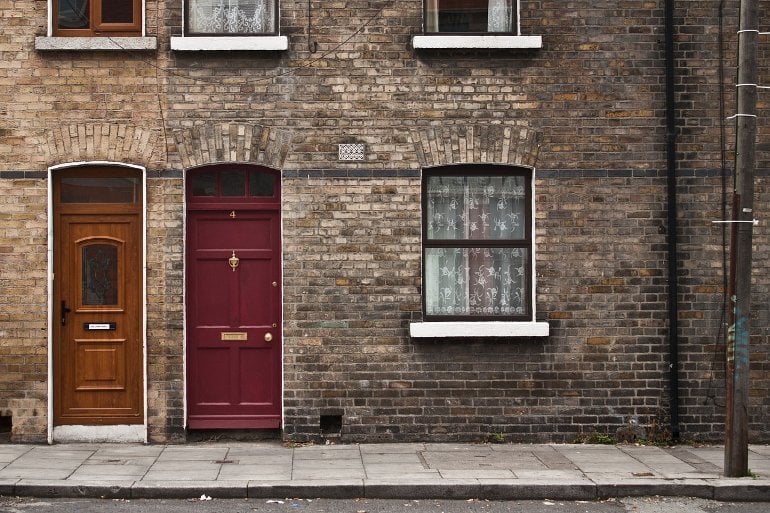Summary: Older adults who live in more affluent areas have better memories and a lower risk of developing Alzheimer’s disease than those who live in less affluent areas.
Source: Monash University
A Monash University study has found people who live in more affluent areas have superior memories and a lower risk of developing dementia, highlighting the need for better facilities in disadvantaged areas to promote healthy lifestyle habits and help curtail the growing burden of dementia.
The study analyzed data collected between 2016 and 2020 from the longitudinal, population-based Healthy Brain Project from the Turner Institute for Brain and Mental Health incorporating 4,656 participants aged between 40 and 70 years without dementia.
The study found that higher neighborhood-level socioeconomic status (n-SES) was associated with superior memory and lower dementia risk scores.
The findings are now published in JAMA Network Open journal.
With dementia the second leading cause of death among Australians and up to 40 percent of dementia cases potentially preventable, the study identifies that more research, resource and efforts are needed for the lower n-SES to have a preventative impact.

Lead author Associate Professor Matthew Pase says a multi-faceted approach is needed to address some of the results.
“With healthy lifestyle habits a key factor in reducing or delaying your risk of developing dementia, it is important for everyone to have access to local facilities such as gyms and public pools, green spaces and health care, but unfortunately that is not always the case,” said Associate Professor Pase.
“More research is needed to better understand the barriers for people so that informed solutions can be delivered at a community level to address the inequalities.”
Dementia Australia says the term dementia is used to describe the symptoms of a large group of illnesses that cause a progressive decline in a person’s functioning. Dementia can happen to anybody but is more common after the age of 65 and there is no cure.
Associate Professor Pase adds: “With dementia predicted to cost Australia more than $18.7 billion in 2025, it is important that everyone has the same opportunity to take ownership of their health.”
About this dementia research news
Author: Press Office
Source: Monash University
Contact: Press Office – Monash University
Image: The image is in the public domain
Original Research: Open access.
“Association of Neighborhood-Level Socioeconomic Measures With Cognition and Dementia Risk in Australian Adults” by Matthew P. Pase et al. JAMA Network Open
Abstract
Association of Neighborhood-Level Socioeconomic Measures With Cognition and Dementia Risk in Australian Adults
Importance
Up to 40% of dementia cases are potentially preventable; therefore, it is important to identify high-risk groups to whom resources could be targeted for maximal impact in preventing late-life dementia. The association of neighborhood-level socioeconomic status (SES) with cognition and dementia risk is not well known, particularly in midlife when late-life dementia may still be preventable through established interventions, such as blood pressure management.
Objective
To examine whether neighborhood-level SES is associated with differences in cognitive performance and dementia risk scores.
Design, Setting, and Participants
This cross-sectional study analyzed data collected between November 17, 2016, and April 14, 2020, from 4656 participants in the longitudinal population-based Healthy Brain Project cohort. This large online cohort comprised community-dwelling individuals geographically dispersed across Australia. Participants were aged 40 to 70 years without dementia or other major neurological conditions.
Exposures
Neighborhood-level SES was computed by matching participants’ residential addresses to the Australian Bureau of Statistics Index of Relative Socio-economic Advantage and Disadvantage (IRSAD). Postcodes provided by each participant were used to derive an IRSAD score that ranked participants according to deciles of neighborhood-level SES (range, 1-10, with higher deciles indicating greater socioeconomic advantage); neighborhoods in deciles 1 to 7 were considered to have low or intermediate SES, and neighborhoods in deciles 8 to 10 were considered to have high SES.
Main Outcomes and Measures
Dementia risk estimated using the dementia risk score from the Cardiovascular Risk Factors, Aging, and Incidence of Dementia (CAIDE) tool (n = 4656) and cognitive composite scores for memory and attention measured by the Cogstate Brief Battery (n = 2181).
Results
Of 4656 participants (mean [SD] age, 56.1 [7.2] years; 3445 women [74.0%]), 2688 individuals (57.7%) lived in areas with high neighborhood-level SES (IRSAD decile ≥8), and 1968 (42.3%) lived in areas with low or intermediate neighborhood-level SES (IRSAD decile <8), with 1263 individuals (27.1%) residing in rural or regional areas.
A total of 6 participants (0.1%) identified as African, 121 (2.6%) as Asian, 57 (1.2%) as Indigenous Australian, 24 (0.5%) as Latin American, 9 (0.2%) as Pacific Islander, 3671 (78.8%) as White or European, and 768 (16.5%) indicated other race (not specified). Each decile unit increase in neighborhood-level SES was associated with a lower CAIDE dementia risk score after adjustment for race and rurality (β [SE] = −0.070 [0.019]; P = .004). Each decile unit increase was also associated with better memory (β [SE] = 0.022 [0.006]; P = .006) but not with better attention (β [SE] = 0.009 [0.007]; P = .34), as measured by Cogstate Brief Battery composite z scores after adjustment for age, sex, race, years of education, and rurality.
When comparing memory performance between individuals with IRSAD scores higher and lower than decile 8, neighborhood-level SES interacted with age (F1-2171 = 6.33; P = .02) and CAIDE dementia risk scores (F1-2173 = 4.02; P = .08). Differences in memory between neighborhood-level SES categories were larger among participants who were older and had a higher risk of dementia.
Conclusions and Relevance
In this study, higher neighborhood-level SES was associated with better memory and lower dementia risk scores. These results suggest that efforts to lower dementia risk factors in disadvantaged areas are needed to curtail the increasing burden of dementia and that inclusion of individuals living in areas with lower SES in research on dementia is warranted to improve understanding and potential interventions.







